Euphorbia leucodendron variegated
Euphorbia leucodendron variegated, also known as the Variegated Cat Tail Euphorbia or Variegated Stick Plant, is a striking succulent plant recognized for its unique, branching form and creamy-white variegation. This variety of Euphorbia leucodendron is admired for its architectural appearance and easy-care nature, making it a favorite among succulent enthusiasts and collectors.
Key Characteristics of Euphorbia leucodendron variegated:
- Scientific Name: Euphorbia leucodendron variegated
- Common Name: Variegated Cat Tail Euphorbia, Variegated Stick Plant
- Family: Euphorbiaceae
- Type: Succulent, shrub-like plant
Appearance of Euphorbia leucodendron variegated:
- Shape:
- The plant grows in a bush-like, shrubby form with numerous slender, upright stems that resemble cat tails. It can reach up to 3-6 feet (1-2 meters) tall in cultivation, although it grows slowly.
- Stems:
- The stems are cylindrical and smooth, with creamy white or light green variegation interspersed with darker green areas. The variegation gives the plant a visually interesting and eye-catching appearance.
- The plant is leafless or nearly leafless, with small, rudimentary leaves that may appear temporarily but are shed quickly, leaving behind the sleek, bare stems.
- Latex:
- Like other euphorbias, the plant contains a milky, toxic latex sap that can be irritating to the skin and harmful if ingested.
- Flowers:
- Euphorbia leucodendron variegated produces small, inconspicuous yellowish or greenish flowers near the tips of the branches. These flowers are not particularly showy and are secondary to the plants striking stems.
Growing Conditions for Euphorbia leucodendron variegated:
- Light:
- This variegated euphorbia prefers bright, indirect light and can tolerate full sun when grown outdoors. Indoors, it thrives in a bright, sunny window but should be protected from intense, direct sunlight, which can cause sunburn on the variegated parts.
- Soil:
- Well-draining soil is essential. A cactus or succulent mix works best, or you can amend regular potting soil with perlite or sand to improve drainage and avoid waterlogged roots.
- Watering:
- Water the plant thoroughly but infrequently. Allow the soil to dry out completely between waterings. Euphorbias are drought-tolerant and should not be overwatered, as excess moisture can cause root rot.
- During winter, water even more sparingly, as the plant\’s growth slows down in cooler months.
- Temperature:
- This euphorbia thrives in warm temperatures ranging from 65-85°F (18-29°C). It is frost-sensitive and should be brought indoors if temperatures drop below 50°F (10°C).
- Humidity:
- Low to moderate humidity levels are ideal, as the plant is adapted to dry, arid environments.
Care and Maintenance of Euphorbia leucodendron variegated:
- Fertilization:
- Fertilize during the growing season (spring and summer) with a balanced, diluted succulent or cactus fertilizer. Fertilization is not needed during the winter months when the plant is dormant.
- Pruning:
- Pruning is typically not required, but you can trim back stems to shape the plant or remove any damaged sections. When pruning, be cautious of the toxic sap and wear gloves to avoid skin irritation.
- Propagation:
- Euphorbia leucodendron variegated can be propagated easily from stem cuttings. After taking a cutting, let it dry for a few days to callous over, then plant it in well-draining soil. Propagation from seeds is less common.
Special Considerations:
- Toxicity:
- All parts of the plant contain a toxic latex sap that can irritate the skin and eyes. The sap is particularly dangerous if ingested by humans or pets, so handle the plant with care and keep it away from children and animals.
- Pest Resistance:
- Euphorbias are generally pest-resistant, though they may occasionally attract mealybugs or spider mites. Regularly inspect the plant and treat infestations with insecticidal soap or neem oil if necessary.
Aesthetic and Ornamental Value:
- Indoor Plant: The sleek, upright stems and variegated color make Euphorbia leucodendron variegated a striking houseplant. It adds vertical interest and texture to any indoor garden and works well in minimalist or modern settings.
- Outdoor Plant: In warmer climates, this euphorbia can be used in xeriscaping or succulent gardens. Its tolerance for drought and low-maintenance needs make it an excellent choice for outdoor planting in arid or semi-arid regions.

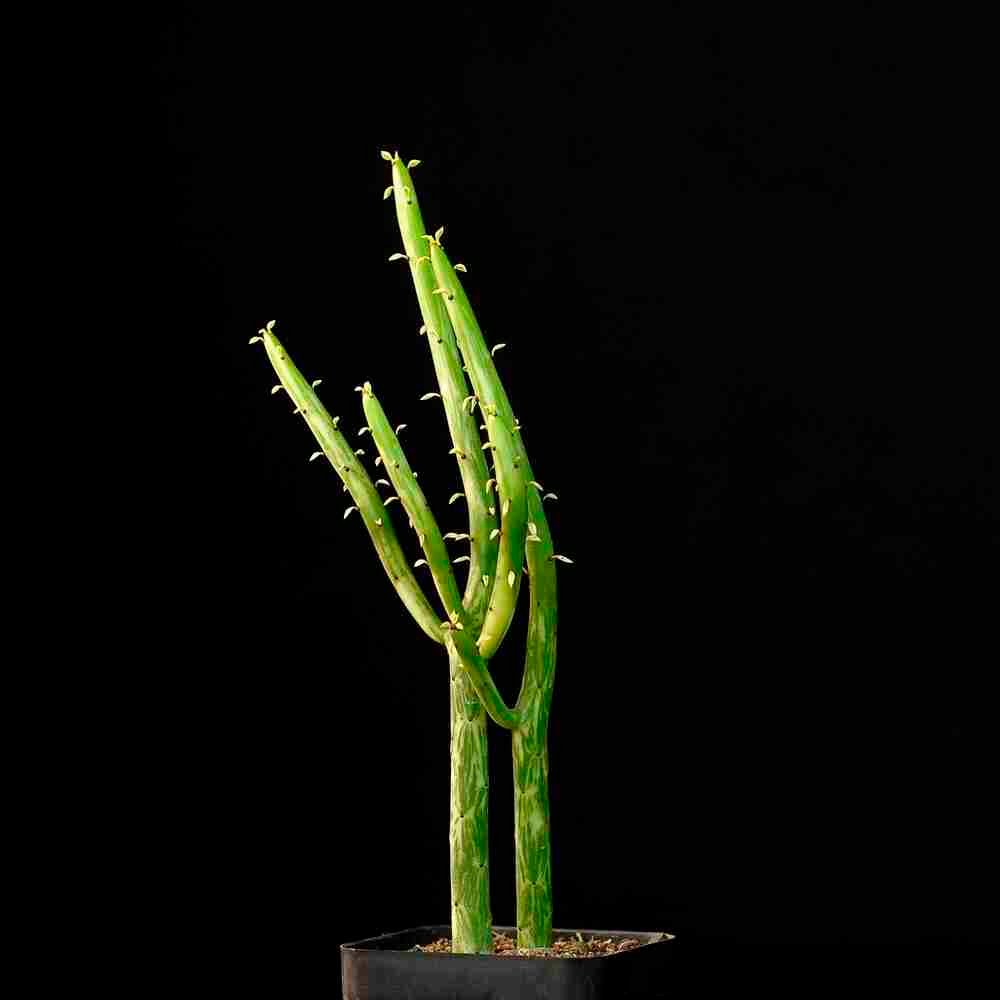
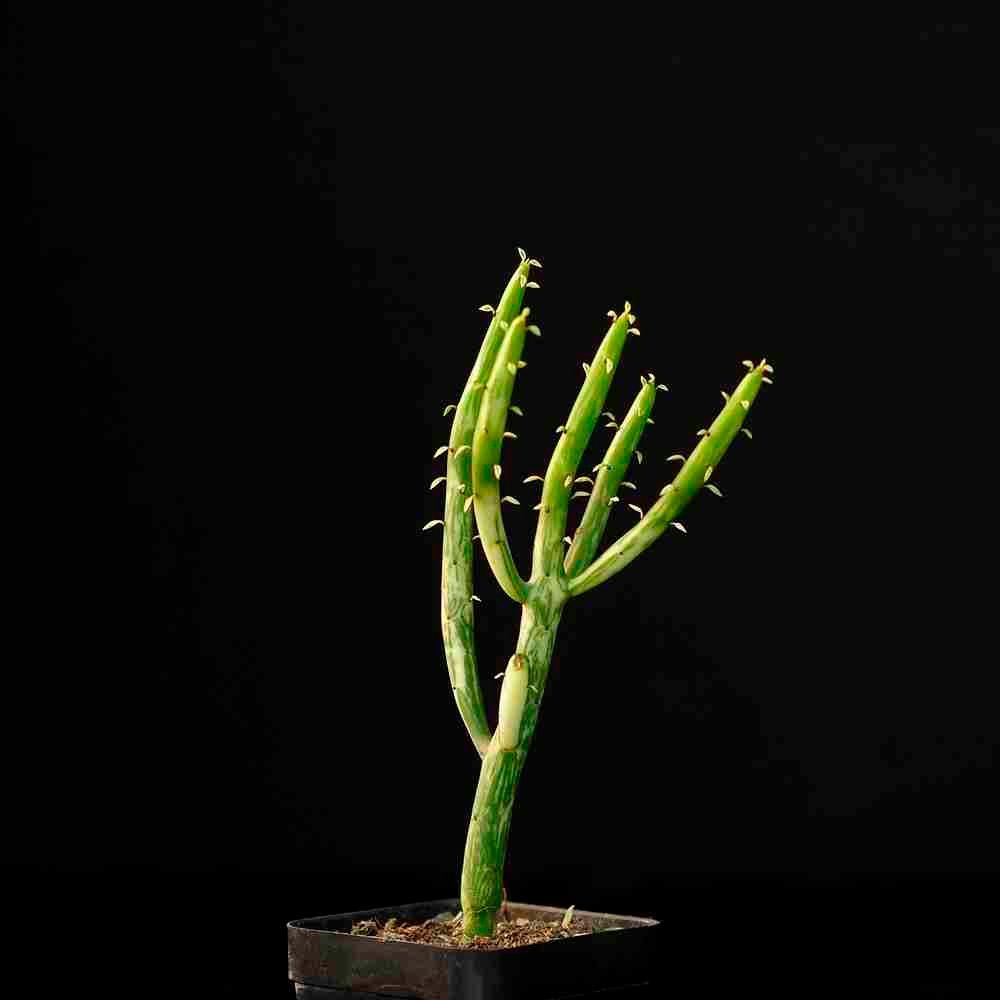
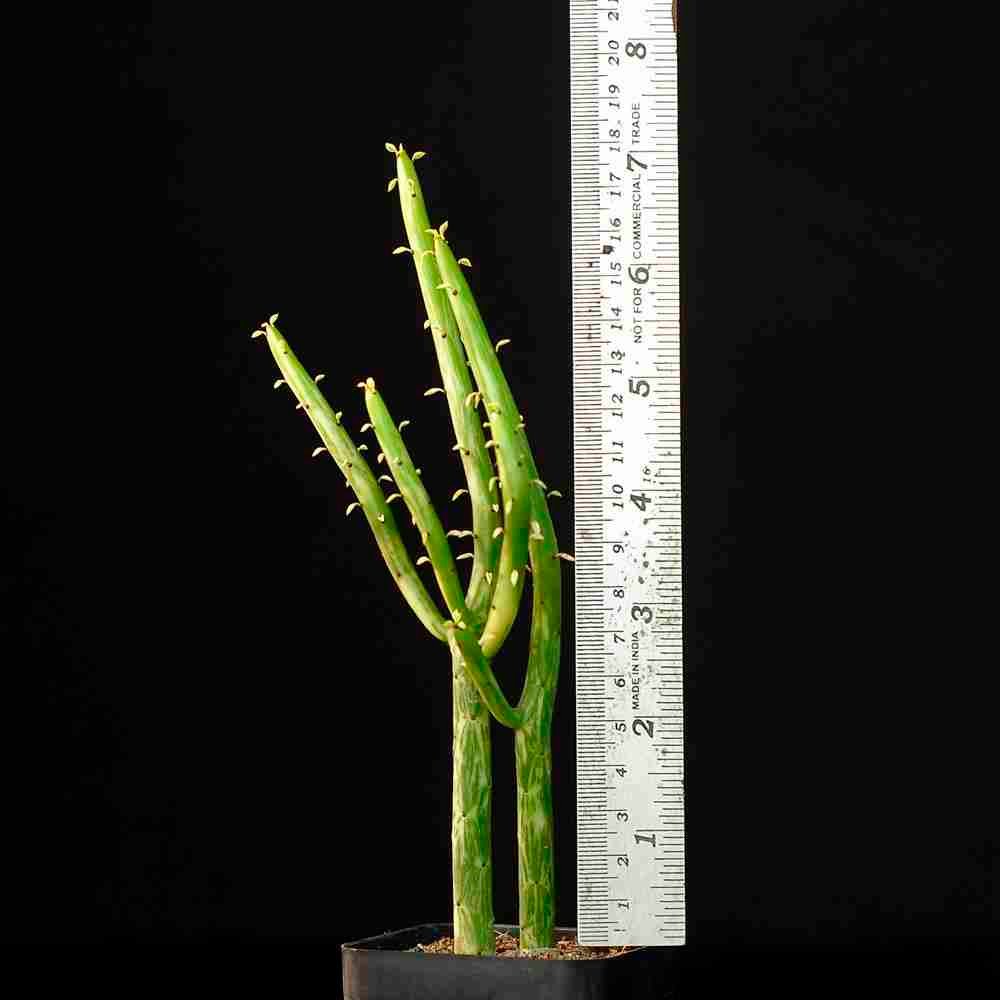
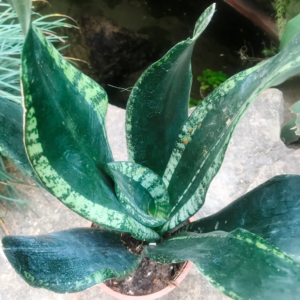
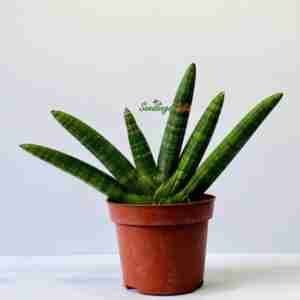
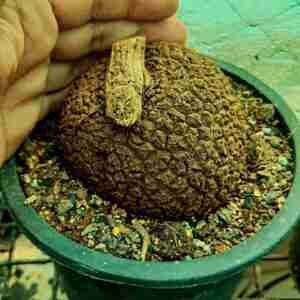
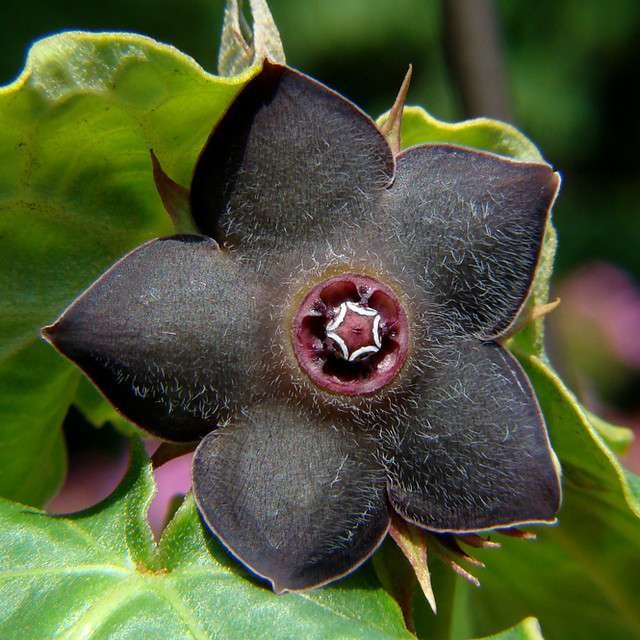
Reviews
There are no reviews yet.